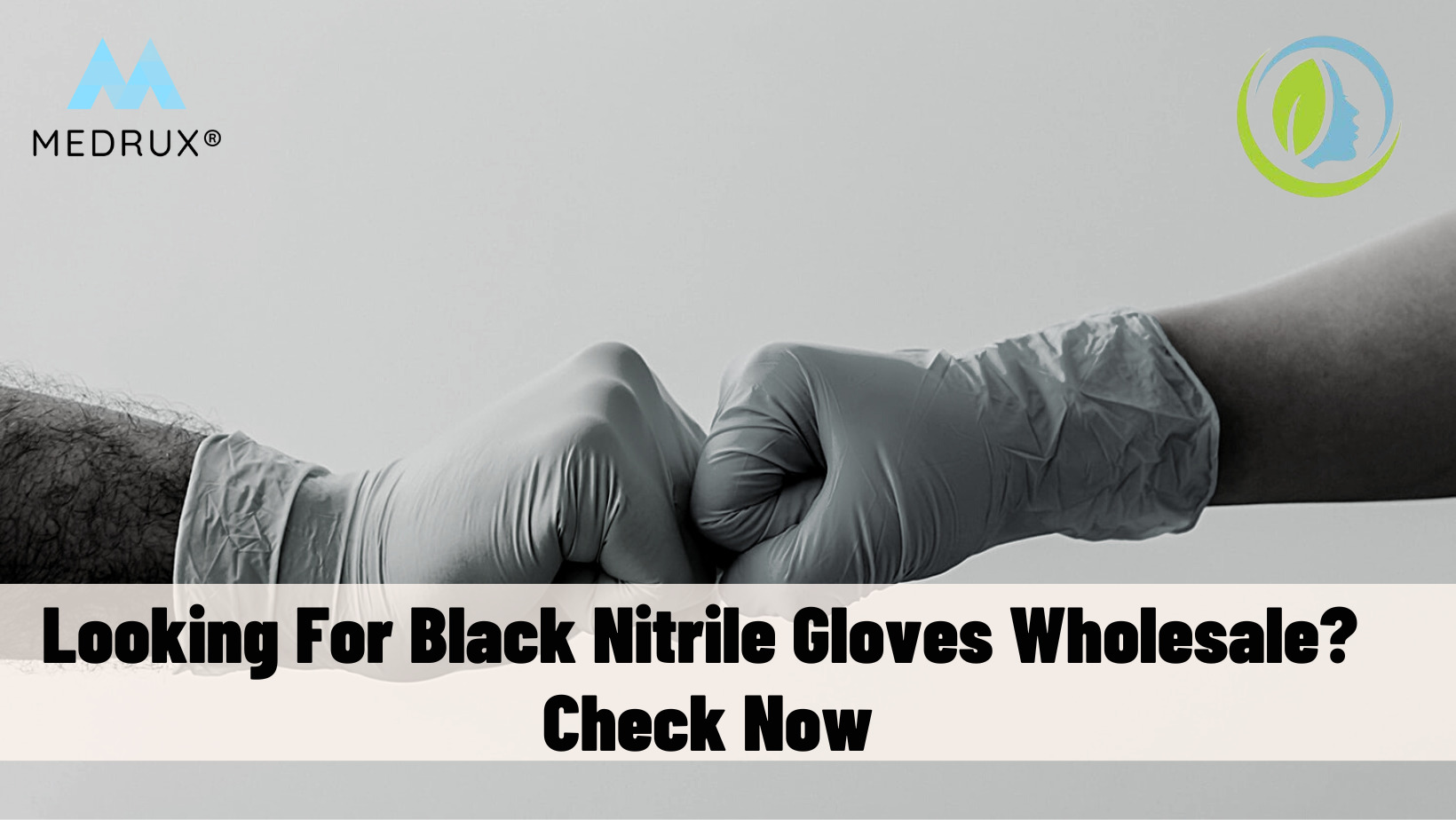I grabbed a pair of nitrile gloves made for post-processing resin prints to remove some paint off resin prints using an acetone bath. My left hand started to feel strange after a while, and I noticed the glove was falling apart.
Is this typical for gloves of this type? Did I purchase poor-quality gloves, or did I choose the wrong type?
Chemical-resistant gloves are intended to safeguard you from potentially harmful chemical exposure.
This article will cover the following topics:
- What are Chemical-resistant Gloves?
- What are Nitrile Gloves?
- Are Nitrile Gloves Resistant to Chemicals?
- Are Nitrile Gloves Resistant to Acid?
- Nitrile Disposable Gloves with Chemical Resistance
- What is the Standard Specification of the Medical Nitrile Gloves?
- What are Thickest and Thinnest Nitrile Gloves?
- Are Nitrile Gloves Resistant to Acetone?
- How Does Acetone Affect Nitrile Gloves?
- What Damage can Acetone Result to Skin?
- What Kind of Gloves to Use with Acetone?
- Butyl Gloves
- Natural Rubber or Latex Gloves
What are Chemical-resistant Gloves?
Chemical-resistant gloves are designed to protect employees from exposure to potentially dangerous chemicals.
Different types of rubber, including latex (natural), butyl, neoprene, nitrile, and fluorocarbon (viton), or different types of plastic, including polyvinyl chloride (PVC), polyvinyl alcohol, and polyethylene, are used to make chemical-resistant gloves.
Latex gloves are frequently used as all-purpose chemical exposure protection.
You will need specialized gloves comprised of materials like nitrile and butyl in situations where better chemical protection is necessary or for conditions in which gloves may also be exposed to abrasives.
What are Nitrile Gloves?
Nitrile rubber, also known as nitrile butadiene rubber (NBR), Buna-N, and acrylonitrile butadiene rubber, is a synthetic rubber derived from acrylonitrile (ACN) and butadiene.
NBR resists mineral oils, vegetable oils, benzene/petrol, ordinary diluted acids, and alkalines.
An essential factor in the properties of NBR is the ratio of acrylonitrile groups to butadiene groups, referred to as the ACN content.
The lower the ACN content, the lower the glass transition temperature; however, the higher the ACN content, the better the polymer’s resistance to nonpolar solvents.
Nitrile gloves effectively protect against various risks in both medical and industrial settings.
Several different types of nitrile gloves are available, including general-purpose, examination, sterile, non-sterile, and alternatives for chemotherapy.
Are Nitrile Gloves Resistant to Chemicals?
Nitrile is very flexible, strong, and resistant to abrasion. They also have chemical resistance, making them ideal for light-duty, quick-duration applications.
Are Nitrile Gloves Resistant to Acid?
Alkaline and some acidic solutions do not damage nitrile gloves.
However, the glove material will likely degrade and break down when handling a potent alkaline solution.
Compared to latex and vinyl gloves, nitrile gloves’ acid resistance is often excellent.
Examples of solid alkalis include barium, sodium, ammonium, calcium, lithium, and potassium hydroxides.
Nitrile Disposable Gloves with Chemical Resistance
Are all nitrile gloves resistant to chemicals?
Thin nitrile gloves only give minimal chemical protection.
You must only wear these gloves briefly when working with chemicals in laboratories. Always take off and throw away your gloves when they get contaminated.
A crucial aspect of chemical safety is wearing gloves to protect your skin.
As a result, you should dress appropriately for the task at hand and put on your gloves so that no exposed flesh is exposed.
Various chemically reactive chemicals can harm nitrile gloves and other materials.
Gloves are evaluated based on three factors when they are exposed to chemicals:
-
Breakthrough Time
It takes this time for the glove to detect a substance inside once the glove’s outside has been exposed to a chemical. A superb glove will last for more than eight hours.
What does that imply?
This means that if a specific chemical enters a glove for 70 minutes and does not surface inside the glove after this time, the breakthrough time will be more significant than 70 minutes.
-
Degradation
Any material that interacts with a solvent will experience physical changes like swelling, splitting, softening, or shrinking.
A glove will experience a chemical breakthrough even if there are no outward indicators of deterioration.
-
Permeation Rate
This is the rate at which a liquid moves through a glove’s material once it has already done so. This rate is affected by surface absorption, product diffusion, and desorption on the internal surface.
Using a numerical value, the penetration rate is expressed as follows:
Excellent (E), Good (G), Fair (F), and Poor (P)
What is the Standard Specification of the Medical Nitrile Gloves?
Nitrile gloves are put through the following standards of testing to see how well they work in various settings and applications:
American Society for Testing and Materials (ASTMD) 6319 standard– Standard specification for Nitrile medical examination gloves
Is a standard that outlines the parameters of nitrile gloves.
An explicit set of requirements to be satisfied by a material, product, system, or service: Examples of specifications include, but are not limited to, requirements for; physical, mechanical, or chemical properties and safety, quality, or performance criteria.
A specification identifies the test methods for determining whether each requirement is satisfied.
ASTM D412 – Standard test methods for vulcanized rubber and thermoplastic elastomers tension
Is a standard test that was created to give way to assess how well rubber and elastomeric materials operate.
The test gives a numerical measurement of the length elongation or changes in samples when an applied external force is applied to them.
ASTM D5151 – Standard test method for detection of holes in medical gloves
Is effective as a reference method for assessing glove samples and is used to find holes in medical gloves.
This approach finds holes that allow water to leak under specified circumstances. This approach does not include how to use medical gloves safely and correctly.
ASTM D6124 – Standard test method for residual powder on medical gloves
This quantifies the amount of non-powder and residual powder solids on medical gloves. Milligrams represent the typical powder mass per glove.
ASTM D6978 – Standard practice for assessment of resistance of medical gloves to permeation by chemotherapy drugs
This is to create a standard reporting of the test results and to provide a systematic technique for evaluating the resistance of medical glove materials to permeation by chemotherapeutic medicines.
ASTM F1671 – Standard test method for resistance of materials used in protective clothing to penetration by blood-borne pathogens using Phi-X174 Bacteriophage penetration as a test system
Is used to test how well protective garment materials withstand blood-borne disease penetration using a surrogate microbe under constant liquid contact.
The detection of viral penetration is used to determine if a protective garment material passes or fails.
ASTM F739 – Standard test method for permeation of liquids and gases through protective clothing materials under conditions of continuous contact
Is typically used to assess flat specimens made from finished protective clothing items and materials that are potential candidates for protective clothing items.
ISO 21171:2006 Medical gloves — Determination of removable surface powder
Is used for the detection of easily removed powder on the surface of medical gloves.
What are Thickest and Thinnest Nitrile Gloves?
10 mil or more is the minimum thickness for thick nitrile gloves.
If a glove has a higher mil count, it is regarded as thicker. Gloves with a minimum thickness of 5 mils offer the best chemical resistance.
Gloves with a 5-Mil or lower thickness are often the thinnest.
Some variants are available in 0.3 mil thickness but are easily punctured by sharp objects and have weak chemical and solvent resistance.
Nitrile is resistant to fuels, petroleum products, vegetable oils, greases, organic solvents, weak acids, weak caustics, and household detergents.
Nitrile has poor resistance to ketones, alcohols, halogenated hydrocarbons, aromatic hydrocarbons, esters, ethers, amines, and strong acids.
Are Nitrile Gloves Resistant to Acetone?
Nitrile gloves: Will they dissolve in acetone?
The chemical molecule acetone, also known as 2-propanone or dimethyl ketone, has the formula (CH3)2CO.
The lowest and most basic ketone is this one (>C=O). It is a colorless, flammable liquid with a distinctively vital, highly volatile odor.
Because it is miscible with water, acetone is a powerful organic solvent in industry, the household, and laboratories.
In 2010, around 6.7 million tons were manufactured globally, primarily as a solvent in synthesizing bisphenol A and methyl methacrylate.
Acetone is widely used; numerous items, including solvents for paints, plastics, adhesives, nail polish, and varnish removers, are made from acetone.
It is a frequent component in organic chemistry. Additionally, it is used to create resins, other compounds, and items made of synthetic leather and rubber.
The harsh chemical acetone, though, might hurt your skin.
You can experience dryness and stinging or worsen existing skin disorders if you have sensitive skin or have been exposed to acetone for an extended period of time.
Therefore, wearing gloves is a must.
How Does Acetone Affect Nitrile Gloves?
The harsh chemical acetone, though, might hurt your skin.
You can experience dryness and stinging or worsen existing skin disorders if you have sensitive skin or have been exposed to acetone for an extended period of time.
Nitrile gloves can withstand some chemicals but swiftly degrade when exposed to ketones like acetone.
In as little as four minutes, acetone can irritate the skin through nitrile gloves, which can be dangerously damaging.
What Damage can Acetone Result to Health?
A person can ingest acetone through their mouth, nose, or skin.
It then enters the bloodstream and travels to the organs throughout the body. How much acetone is in the body will determine the consequences it has.
When there is only a tiny amount —as is typically the case when skin contact with it occurs when using cleaning products or nail polish remover—your liver converts it into safe molecules.
Skin contact with acetone can cause your skin to become dry, irritated, and cracked.
Inhaling moderate to high acetone concentrations can irritate the eyes, nose, throat, and lungs.
High concentrations of acetone inhaled or ingested over a brief period of time might result in unconsciousness (passing out), coma, racing heart, headaches, confusion, nausea, and racing pulse.
-
Is acetone toxic?
Nearly every system in your body, including the respiratory, neurological, and cardiovascular systems, can become toxic after prolonged exposure to acetone.
Long-term acetone exposure has been linked to birth abnormalities, male infertility, and kidney, liver, and nerve damage in studies conducted primarily on animals.
-
What are first aid measures for acetone in case of skin contact?
Take off contaminated clothing, shoes, and leather goods (e.g., watchbands, belts).
Flush with lukewarm, gently flowing water for 5 minutes. If irritation or pain persists, see a doctor. Thoroughly clean clothing, shoes, and leather goods before safely reusing or disposing of them.
Therefore, wearing suitable gloves is a must.
What Kind of Gloves to Use with Acetone?
Choosing the best acetone-resistant gloves is essential when handling acetone. So, what are the most suitable safety chemical-resistant gloves?
-
Butyl Rubber Gloves
Choosing the best acetone-resistant gloves is essential when handling acetone. So, what are the most suitable acetone-resistant?
Acetone is more resilient against butyl rubber. It has high gas and vapor resistance. It also safeguards esters and ketones.
So, what is it about butyl gloves that makes them so durable?
Butyl is a synthetic rubber substance that has a thick molecular structure.
It turns out that butyl rubber is a synthetic elastomer created by polymerizing isobutylene (98%) and isoprene (2%). Rubber is typically used to make gloves that are resistant to chemicals.
Which chemicals do butyl gloves protect against?
According to the Occupational Safety and Health Administration (OSHA), butyl is included in the glove selection chart for chemical resistance.
Butyl protects against various chemicals, such as peroxide, rocket fuels, highly corrosive acids (nitric acid, sulfuric acid, hydrofluoric acid, red-fuming nitric acid), strong bases, alcohols, aldehydes, ketones, esters, and nitro compounds.
Butyl gloves also resist oxidation, ozone corrosion, and abrasion and remain flexible at low temperatures.
Can Butyl Gloves be Used Multiple Times?
Yes, they are.
Disposable gloves might not be ideal if you need to protect your hands while working in a toxic environment. Butyl gloves can be reused numerous times without disintegrating.
-
Natural Rubber or Latex Gloves
The oldest and most popular substance used to make disposable gloves is latex.
The gold standard for gloves for many years has been latex.
Natural rubber latex (NRL) is a polymer derived from wild rubber trees, also known as (Hevea brasiliensis).
Another choice is natural rubber; however, when combined with acetone, its breakthrough time is only about ten minutes. Some people may also experience allergic responses to latex.
-
What is latex allergy?
A reaction to specific proteins in natural rubber latex, a substance manufactured from the rubber tree, causes latex allergy.
The following table from the U.S. Department of Energy (Occupational Safety and Health Technical Reference Manual) rates nitrile, natural latex or rubber, and butyl gloves as protective against acetone.
| Chemical | Butyl | Natural latex
or Rubber |
Nitrile |
| Acetone | Very Good in extended contact | Very Good in incidental contact | Poor |
Conclusion
Acetone is widely used; numerous items, including solvents for paints, plastics, adhesives, nail polish, and varnish removers, are made from acetone.
Additionally, it is used to create resins, other compounds, and items made of synthetic leather and rubber.
Direct exposure to acetone through the skin can cause your skin to become dry, irritated, and cracked.
Therefore, wearing a glove is important when handling acetone. Yet, it is more important to choose the right glove.
Butyl gloves are the most acetone-resistant gloves.
They protect against esters and ketones for a long time of exposure. In addition, those gloves are reusable.
Natural rubber is another choice for incidental contact.
However, its breakthrough time is only about ten minutes when combined with acetone. In addition, some people may also experience allergic responses to latex.
Therefore, it is essential to select suitable gloves resistant to acetone carefully.
Feel free to send us anytime for more questions and inquiries.







